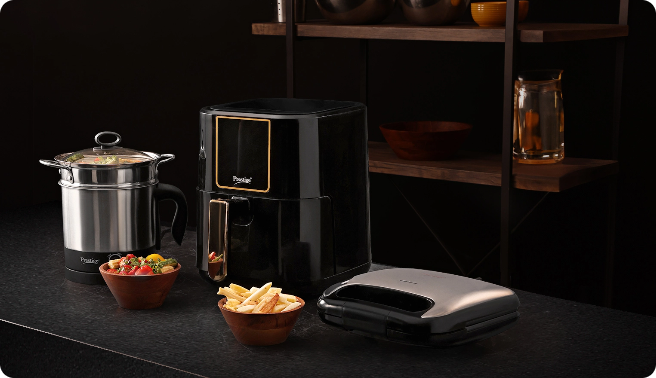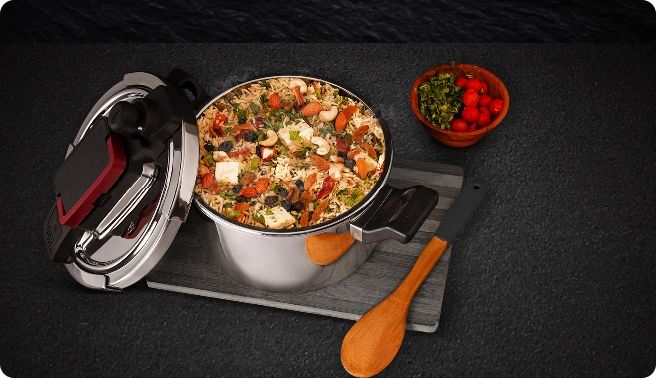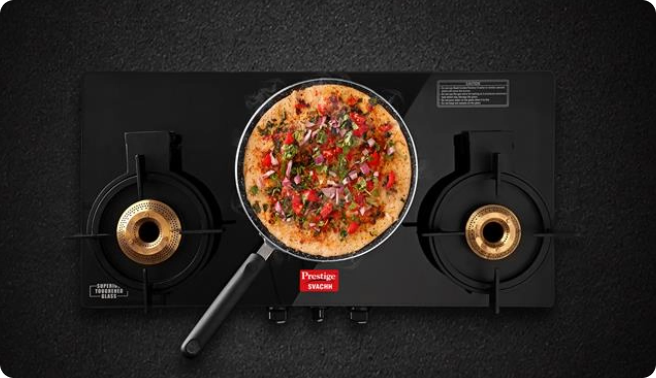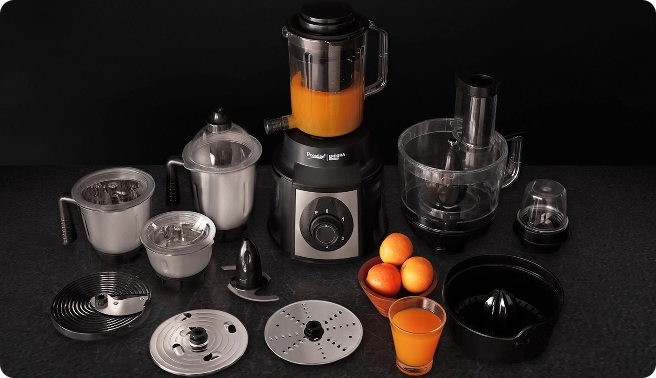Introduction
Choosing the right cooktop isn’t just about preference—it’s about how you cook, live, and fuel your everyday life. In 2025, the debate of induction cooktop vs gas stove remains more relevant than ever. While both options have evolved with modern features, the decision between them often hinges on your cooking habits, lifestyle, and household needs.
An induction cooktop offers sleek efficiency and next-gen convenience, making it ideal for compact kitchens, young professionals, or eco-conscious households. On the other hand, a gas stove remains a favorite among seasoned home chefs and larger families who require flexibility, high-heat control, and a wider range of cooking techniques.
In this guide, we’ll unpack the pros and cons of each, explore how they work, and compare them across performance, safety, energy use, and cost—so you can confidently choose what truly suits your kitchen and lifestyle.
What is an Induction Cooktop and How Does It Work?
An induction cooktop uses electromagnetic tech to heat your cookware directly, skipping the traditional flame or coil. This makes cooking faster, more energy-efficient, and safer—ideal for modern kitchens. It's a preferred choice for today’s eco-conscious and time-strapped home cooks.
Benefits of Induction Cooktops
The advantages of induction cooktop technology go beyond speed. Here are some key benefits:
- Faster Cooking: The pan heats up instantly, reducing meal prep time significantly.
- Energy Efficient: Transfers heat directly to the pan, so minimal energy is wasted—lowering electricity bills.
- Safe to Use: Since there’s no open flame and the surface stays relatively cool, there’s a reduced risk of burns or fire.
- Easy Cleaning: Flat glass surfaces mean no stubborn spills or hard-to-clean crevices.
- Precision Cooking: Perfect for dishes that require delicate simmering or consistent heat.
- Smart Features: From timers and auto shut-off to child locks and voltage regulators, these induction cooktops are loaded with intelligent controls.
Recommended Induction Cooktops from Prestige
1. Prestige PIC 20.0 – 1600W Induction Cooktop
This is a budget-friendly, beginner-friendly model ideal for small households or those new to induction cooking. With 1600W of power and simple push-button controls, it covers daily cooking needs like boiling, frying, and simmering without overwhelming users with too many settings.
2. Prestige PIC 3.1 V3 – 2000W Induction Cooktop with Indian Menu Options
Designed with Indian kitchens in mind, this powerful 2000W model includes pre-set options for popular dishes like dosa, curry, and chapati. It also features a built-in voltage regulator and dual heat sensors, offering precise control and consistent cooking results for a variety of recipes.
3. Prestige Double Induction Cooktop PDIC 3.0
Perfect for larger families or multitasking chefs, this double cooktop lets you cook two dishes simultaneously without compromising on speed or performance. With sleek touch controls and dual zone operation, it’s the perfect upgrade for those looking to modernize their kitchen experience.
4. Prestige PIC 15.0 – 1900W Induction Cooktop
This model strikes a perfect balance between power and portability. With 1900W of heating capability, it’s suitable for both everyday and slightly more demanding cooking tasks. Its anti-magnetic wall ensures efficient heat use, while the automatic keep-warm function adds convenience.
5. Prestige PIC 20 WIZ Induction Cooktop
The PIC 20 WIZ combines intuitive operation with energy-saving technology. Ideal for busy kitchens, it features preset cooking modes, soft-touch buttons, and intelligent power adjustment that tailors the energy use based on the size of your vessel—making every meal more efficient.
For more information you can also read 10 Best Induction Cooktops For Modern Kitchens
What is a Gas Stove and How Does It Work?
What is a gas stove?
A gas stove is a time-tested cooking appliance that uses combustible gases like LPG (Liquefied Petroleum Gas) or PNG (Piped Natural Gas) to produce an open flame. This flame directly heats your cookware, making it an intuitive and efficient method of cooking. It's a staple in Indian households thanks to its simplicity, control, and versatility.
How does a gas stove work?
Gas stoves operate on a fairly simple but effective mechanism:
-
Gas flows from the cylinder or pipeline through a pressure regulator into the stove.
-
The gas reaches the burners, where it mixes with air.
-
Ignition—either manual (with a lighter) or automatic—creates a controlled flame.
-
The flame directly heats the cookware placed on the burner supports or trivets.
This direct heating method gives you visible and real-time control, perfect for mastering traditional recipes.
Benefits of Gas Stoves
Here are the key advantages of a gas stove that explain their ongoing popularity:
- Visual Flame Control: Easily adjust the intensity of the flame based on your cooking needs.
- Works with All Cookware: No need to worry about compatible vessels—use anything from clay pots to stainless steel or aluminium pans.
- Reliable During Power Cuts: No electricity needed, which is a major plus during blackouts or in areas with inconsistent supply.
- Multiple Burner Options: Choose 2, 3, or 4 burners to suit your cooking style and family size.
- Durable & Long-Lasting: Built to endure years of cooking; ideal for everyday use in Indian kitchens.
Recommended Gas Stoves from Prestige
1. Prestige Magic Plus LP Gas Stove
This stylish gas stove comes with a toughened glass top and high-efficiency tri-pin brass burners, making it both elegant and practical. Designed for ease of use, the Prestige Magic Plus is ideal for medium-sized families looking for performance and aesthetics in one package.
2. Prestige Svachh Neo Glass Top Gas Stove with Liftable Burners
Cleaning just got easier with this innovative liftable burner design. The Svachh Neo not only offers an elegant black glass finish but also makes daily maintenance a breeze. It’s perfect for those who love cooking but dread the cleanup.
3. Prestige Prime LP Gas Stove – Stainless Steel Body with 2 Brass Burners
Compact and sturdy, this model is ideal for bachelors or small families. With a durable stainless steel body and two high-efficiency brass burners, the Prestige Prime is built for reliability and longevity, all while taking minimal counter space.
4. Prestige Royale Plus Schott Glass Top Gas Stove – 3 Burners
A premium offering for modern kitchens, this model features German-made Schott glass, known for its durability and heat resistance. The three-burner setup ensures multitasking is effortless, while the elegant design adds a touch of sophistication to your kitchen.
5. Prestige Svachh Perfect 3B Stainless Steel Manual Gas Stove
Blending hygiene with practicality, this stove features liftable burners for hassle-free cleaning and a rust-resistant stainless steel body. Its manual ignition and spacious burner layout make it perfect for traditional, hands-on cooking.
6. Prestige Vectra 3-Burner Glass Top Gas Stove
Packed with thoughtful features, this model includes a jumbo brass burner, 360-degree gas inlet, and a toughened glass top with 5 years of warranty. It’s designed for heavy-duty use and convenience, making it ideal for larger households or cooking enthusiasts.
For more information you can read 10 Best Gas Stoves For Every Kitchen
Difference Between Induction Cooktops and Gas Stoves
|
Feature |
Induction Cooktops |
Gas Stoves |
|
Heat Source |
Electromagnetic coil that directly heats the cookware |
Open flame generated by burning LPG/PNG gas |
|
Cookware Needed |
Requires induction-compatible cookware (iron/steel base) |
Works with all types of cookware |
|
Safety |
Surface stays cool, includes auto shut-off and child lock |
Exposed flame, risk of gas leaks or accidental burns |
|
Energy Efficiency |
Highly efficient (up to 90% of energy is utilized) |
Moderate (40–60% efficiency; heat escapes easily) |
|
Cleaning |
Smooth glass surface makes wiping spills effortless |
Requires scrubbing around burners and trivets |
|
Power Dependency |
Needs constant electricity supply |
Operates independently of power supply |
Induction vs Gas Stove: Cooking Performance
- Induction cooktops excel at fast, consistent heating, making them perfect for precision cooking. Boiling water or simmering sauces becomes quicker and more efficient.
- Gas stoves offer instant flame control which is ideal for tadka, open-flame roasting, or using a roti press the traditional way.
Induction vs Gas Stove: Energy Efficiency
- Induction cooktops are far superior in terms of energy efficiency, transferring up to 90% of energy directly to the cookware.
- Gas stoves lose a significant amount of heat around the sides of the pan, with only about 40–60% efficiency, leading to higher fuel consumption.
Induction vs Gas Stove: Safety and Convenience
- Induction stoves score high on safety: there’s no open flame, and features like auto shut-off, child lock, and surface coolness reduce the risk of accidents.
- Gas stoves offer instant heat and intuitive control, but come with potential hazards like burns, gas leaks, or mishandling flame intensity.
Induction vs Gas Stove: Cost Analysis
-
Initial Investment: Induction cooktops may have a higher upfront cost than basic gas stoves.
-
Running Cost: Over time, induction stoves are usually cheaper to operate, especially if you cook for 1–2 hours daily. They use less energy and heat your food more efficiently.
Pro tip: If you're cooking frequently and value efficiency, the lower operational cost of an induction may offset the initial price quickly.
Induction or Gas Stove: What’s Best for Your Kitchen?
Choose an Induction Cooktop if you:
- Prefer sleek, modern kitchen appliances
- Value safety, speed, and energy efficiency
- Have a reliable electricity supply
- Appreciate smart features like timers, auto cook menus, and child locks
Choose a Gas Stove if you:
- Want versatility with all kinds of cookware
- Need visual flame control for traditional recipes
- Live in an area with frequent power cuts
- Prefer the feel of flame-based cooking passed down through generations
Conclusion
Both gas stoves and induction cooktops have their strengths. Your decision should depend on cooking style, energy preferences, budget, and convenience. In urban homes, induction cooktops are quickly becoming the preferred choice, thanks to their smart tech and energy-conscious design. But gas stoves continue to be reliable, versatile, and culturally attuned to Indian cooking.
Whether you pick a smart induction model or a classic gas stove, Prestige offers high-quality options tailored to your needs.
Frequently Asked Questions (FAQs)
1. What is the major difference between an induction cooktop and gas stove?
A. The primary difference is the heat source: induction cooktops use electromagnetic energy, while gas stoves use open flames.
2. Which is more energy-efficient: induction stove vs gas stove?
A. Induction is more energy-efficient, converting up to 90% of electricity into usable heat versus 40–60% efficiency in gas.
3. What is the lifespan of an induction cooktop vs. a gas stove?
A. With proper care, both can last 8–12 years. Induction surfaces need less maintenance, while gas stoves may require occasional burner servicing.
4. Can I use any pan on an induction cooktop?
A. No. Only induction-compatible cookware (magnetic base) will work. Check for an induction symbol when buying.
5. Are induction cooktops safe for households with children?
A. Yes. With features like cool surfaces, child locks, and auto shut-off, induction cooktops are among the safest kitchen appliances for families.



















